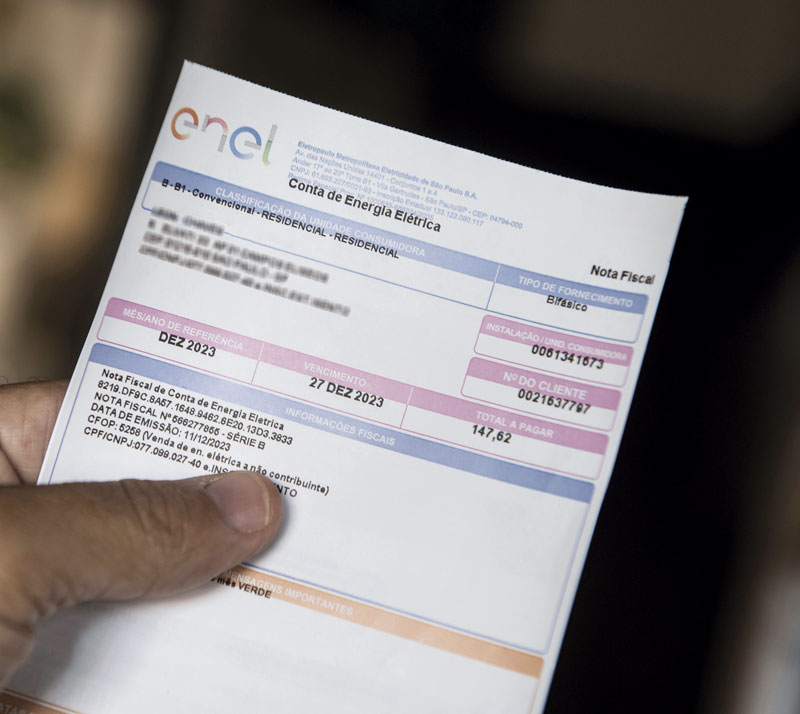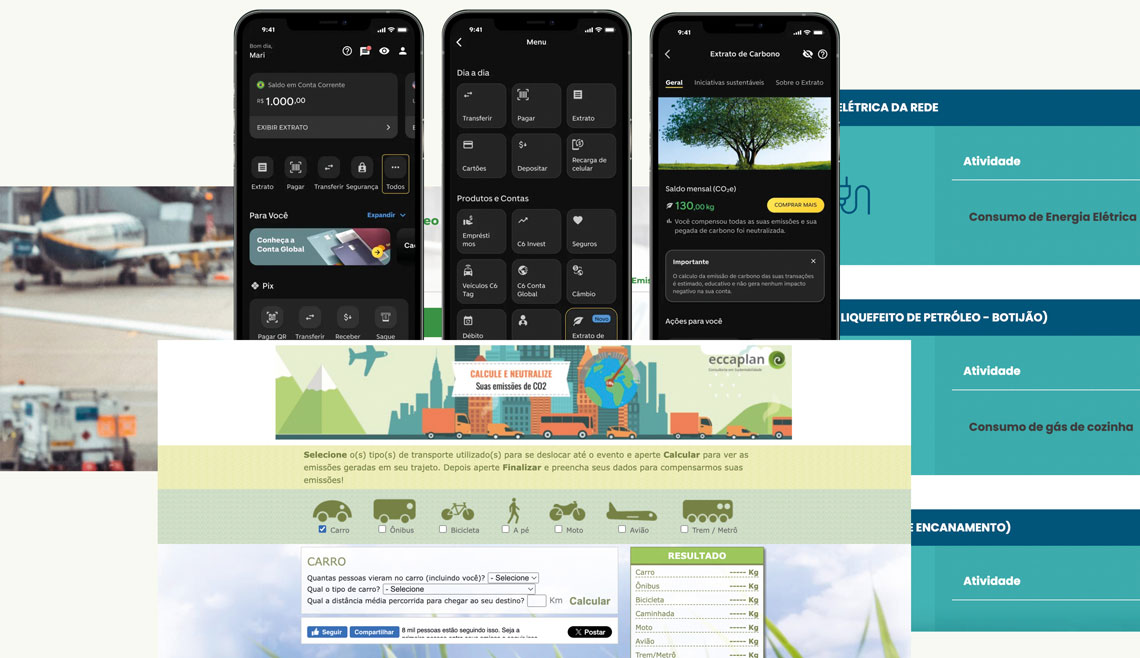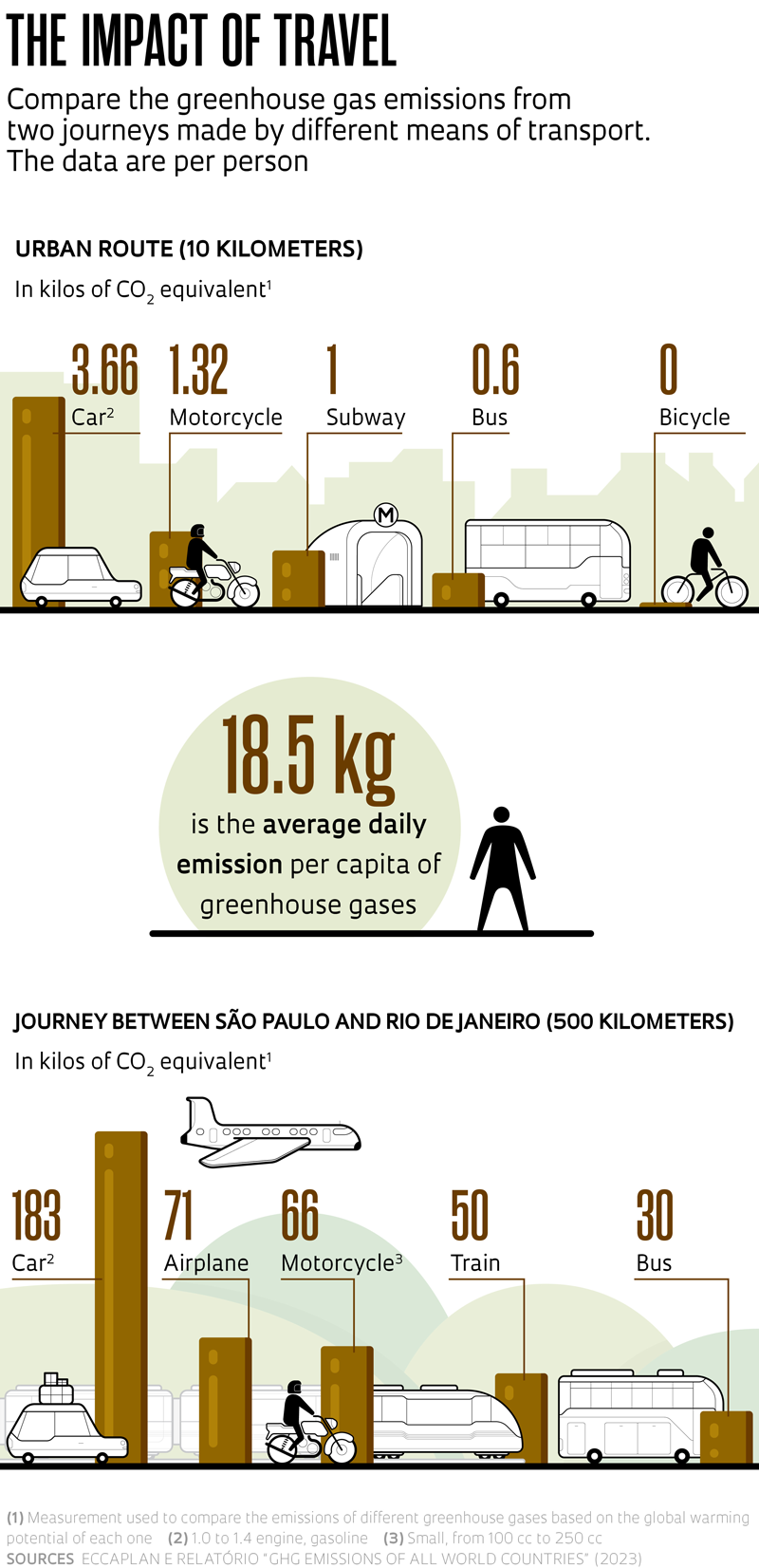Calculators and other online tools for quantifying the carbon footprint of individuals, companies, or events are becoming more and more commonplace in the country. Based on the calculations of accessible data, such as electricity and gas consumption, waste generation, transport use, and even financial transactions, these instruments propose to estimate the polluting potential of our daily habits. The results can aid concrete actions for the reduction of greenhouse gases (GHGs), responsible for climate change, as well as generating greater environmental awareness in the day-to-day lives of Brazilians.
Some calculators also offer the option to offset the carbon footprint through reforestation, forest preservation, or carbon credit purchasing programs. Some tools inform the footprint by activity, such as shopping, housing, and food; others provide a comparison between the individual carbon footprint result and global averages.
Depending on the methodology, a calculator can make use of different input data. Among them, energy consumption, mobility, and waste generation. This information is transformed using conversion factors, preferably adapted to the local reality, into estimates in kilograms (kg) or tons (t) of annual carbon dioxide (CO2-eq) emissions, a term that represents different GHGs as a single measurement of equivalence to carbon dioxide (CO₂).
The more detailed the data collected by a tool is, and the more specific the conversion factors adopted are, the more precise the climatic impact estimate tends to be. Going out on foot to buy a cake at the store on the corner in a city in Brazil, for example, is different in terms of the carbon footprint of taking a gasoline-powered car to buy a cake in a supermarket in the USA, considering the environmental cost of the movement, the ingredients and making of the cake, and the maintenance of a business establishment by country.
A calculator with an educational nature can have a lower level of input data requirements
The digital bank C6 Bank recently launched a calculator on its app. With it, all the account holder’s expenditure is converted into a value that appears in a “carbon statement” as kg of CO₂-eq. With the statement at hand, the client has the option of compensating their footprint by purchasing carbon credits from Amazon preservation projects. The value is fully allocated to partners of the program, according to the bank.
“The client doesn’t need to do anything to get this information about the individual footprint, because the calculation is done based on the expenses on the credit and debit cards, and electronic bank transfers (PIX) to legal entities,” says Marina Mancini, ESG manager of C6 Bank. She informs that the carbon footprint estimates are made based on the Greenhouse Gas (GHG) Protocol principles, a standard for quantifying GHG emissions for governments and corporations, the sector of the company in which the purchase was made, and reference values from the Brazilian market. “More important than knowing the exact value of the footprint is enabling the client to be aware of the impacts of their consumption profile and be able to adopt measures to reduce their individual footprint.”
Electrical engineer Monica Carvalho, a professor in the Department of Engineering of Renewable Energies of the Federal University of Paraíba (UFPB), agrees that, beyond the numerical values, a significant aspect of the individual carbon footprint calculation tools is its educational potential.
“The idea is that the user looks at the result of their behavior today on the calculator and says: ‘tomorrow I’m not going to take such a hot shower’ or ‘I’m not going to use the car, I’ll go by bus.’ And from there, they monitor the environmental impact of their changes in habit using the tool and start to question themselves: ‘And what if everyone in the neighborhood did this too?’” ponders Carvalho.
In an article published in the scientific journal Research Society and Development, in 2021, the researcher discusses the concept and development of an app to measure electricity consumption and the carbon footprints of users as a way of raising environmental awareness. “The use of apps has contributed to the understanding of the role that each individual has as a collaborative agent for change in a large-scale and long-term context,” highlight the authors of the study.

Léo Ramos Chaves / Pesquisa FapespElectricity bill: to calculate our polluting potential, some calculators use the number of kilowatts consumed; others, the amount paidLéo Ramos Chaves / Pesquisa Fapesp
Also, with the objective of encouraging more active participation of individuals and companies for the benefit of environmental solutions, the São Paulo based startup Eccaplan provides online calculators on its platform and a means for compensating carbon emissions. One of the tools, that can be customized for specific events, measures how much a journey by any means of transport generates in emissions. Another, linked to a larger questionnaire, presents the annual footprint of a person, event, or corporation.
“We decided to work with individuals and companies to show that their activities impact the environment. It was in order to provide this education that we started to create our different systems,” says Fernando Beltrame, CEO of Eccaplan, founded in 2008 with the support of the Ministry of Science, Technology, and Innovation (MCTI) and the University of São Paulo (USP).
“Sometimes, a person in São Paulo thinks that there is nothing they can do in the city, because the thing harming the planet is the person cutting down the Amazon,” says Beltrame. The entrepreneur observes, however, that everyone, in some manner, impacts the environment. “It is possible to calculate this impact and seek ways to reduce it and compensate it.”
Two more carbon dioxide calculators available online are those of nongovernmental organizations SOS Mata Atlântica and Iniciativa Verde (which translate literally as SOS Atlantic Forest and Green Initiative, respectively), more focused on consumers and which use data such as electricity and gas consumption and locomotion to calculate emissions and offer forms of compensating them. The Brazilian Support Service for Micro and Small Businesses (SEBRAE) provides a 15-minute course on its platform for micro and small business owners to be able to calculate the emissions linked to their businesses and visualize the most polluting sectors, such as electricity or waste.
In her doctoral thesis, defended at the Federal University of Viçosa (UFV), forestry engineer Eliana Boaventura Bernardes Moura Alves discusses the merits and limitations of individual carbon footprint calculation tools—the study resulted in an article published in the periodical Carbon Management, in 2020. According to her, in order for the estimates to be more exact, ideally, they would have specific standards to regulate the development of these tools, besides greater transparency on the part of the developers of the calculators about the methodology used to generate the results.

